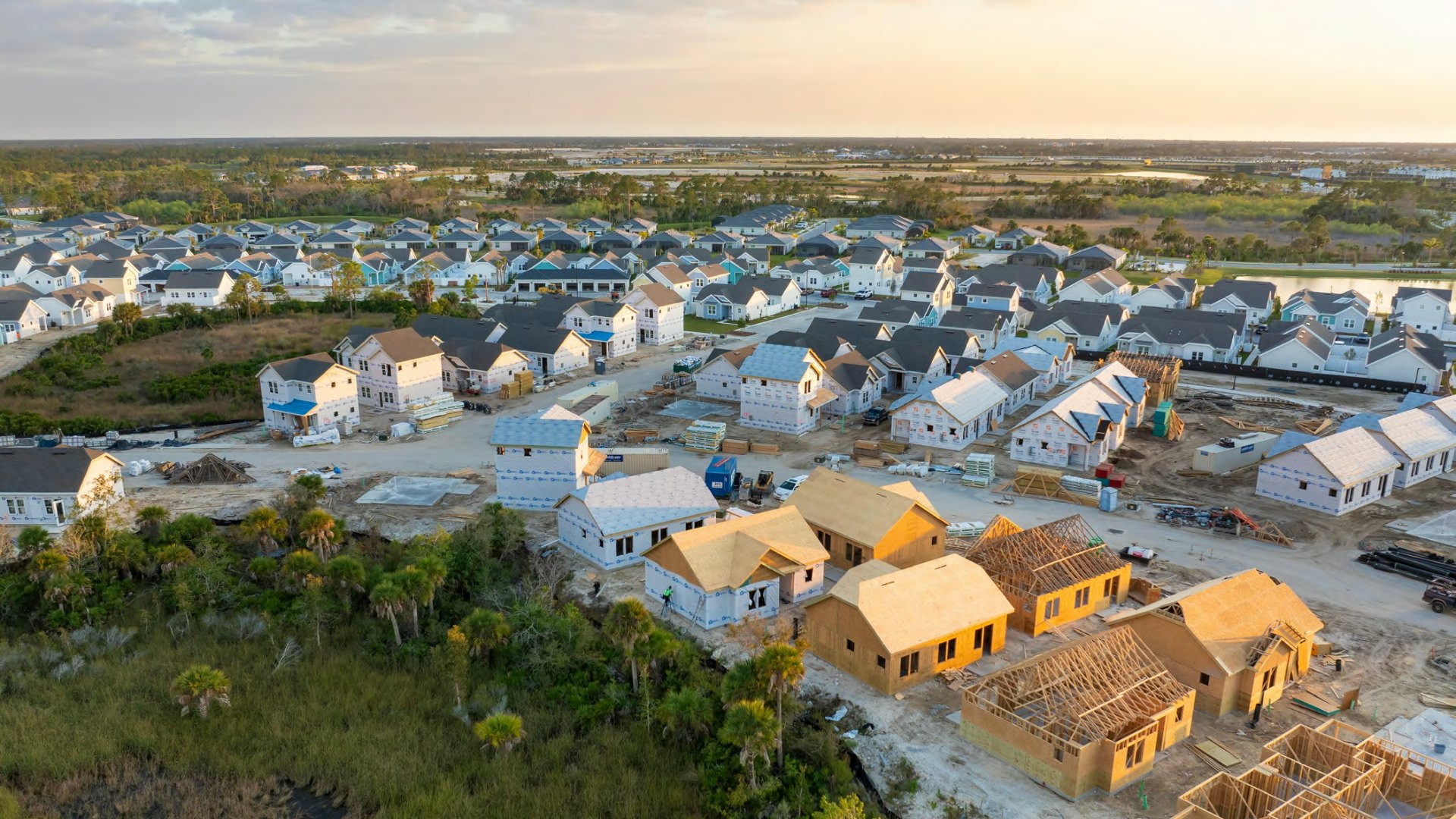Our Recommendations:
- Cities should plan for smart outward expansion, allowing medium density development in newly developing areas
- Cities should streamline permitting processes and allow a mix of activities in as many areas as possible
- Cities should focus obsessively on quality placemaking
- City governments should implement split-rate property taxes, taxing land at higher rates than structures
- City governments should promote subsidized housing for lower-income families, emphasizing preservation but also supporting new construction in limited, targeted ways
Municipal governments are on the front lines of America’s housing crisis and must adopt smart policies if they want to make their cities great places to live far into the future. This is critical for retaining current residents, attracting new ones, and expanding opportunity for everyone.
It all starts with getting the urban basics right, like public safety, good schools, infrastructure and financial sustainability. Developers will only build homes in locations where there’s strong demand to live. But localities throughout the United States also need to make it easier to build new homes, including a variety of housing types in as many locations as possible, as the George W. Bush Institute-SMU Economic Growth Initiative shows in a new report.
Underproduction of homes, mostly since the global financial crisis of 2008, is the chief cause of the nation’s growing affordability challenges. We estimate a national shortfall of 6.1 million to 7.8 million housing units. Local policies are the chief culprit for the nation’s underproduction. Over the last several decades, local governments have imposed increasingly strict regulations on what and where developers can build, imposed over-restrictive rules that drive up development and construction costs, and created approval and permitting processes stacked against allowing new homes.
As a result, home prices and rents have risen far faster than Americans’ incomes in the 21st century in most U.S. cities. Sky-high prices stand in the way of economic opportunity for millions of Americans by preventing moderate-income people from living within range of thriving job centers, reducing the rewards from hard work, and holding back homeownership, the principal means of wealth accumulation for many Americans.
Many studies confirm that localities with more restrictive land-use policies experience higher land values, higher production costs, less development, and higher rents and home prices as a result. Conversely, cities that have enacted pro-housing reforms and that score relatively high for policies welcoming new development – like Austin, Texas; Charlotte, North Carolina; and Houston, Texas – have shown that it’s possible under the right circumstances to unleash a homebuilding boom sufficiently large to push down prices and rents in contemporary U.S. cities.
Localities can set themselves up for success in the following ways:
Cities should plan smart outward expansion, allowing medium-density development in newly developing areas
This requires leading with a vision of how growth will benefit all residents, planning for ample green space, and building infrastructure that the tax base will sustainably support in the long term. Cities should allow as much medium-density development – including starter homes on small lots, townhomes, and apartments in some areas – on an as-of-right basis as possible. They should also avoid idiosyncratic local building codes that add costs or prevent innovative housing types like modular homes.
Experience over many decades confirms that development in new areas rather than densification of built-up urban locations has long been the principal way cities and metropolitan areas add housing at large scale, and it’s likely to account for most development in the future. More than 30% of the housing units added in the United States since 2010 are in outwardly expanding suburbs of just 25 large Sun Belt metro areas, the Bush Institute-SMU report shows. America’s success in addressing its housing challenges will hinge on the extent to which growing cities expand in smart, sustainable ways rather than sprawling unsustainably at very low-density levels.
Cities should streamline permitting processes and allow a mix of activities in as many areas as possible
This includes promoting new walkable mixed-use centers; allowing infill development of apartments, townhomes, 2-4 plexes, and tiny homes in substantial portions of every city’s land mass; permitting apartments as-of-right in all commercially zoned areas; reducing minimum lot sizes; and lowering or eliminating parking spot requirements in new apartment buildings. It can also include allowing accessory dwelling units (ADUs) in areas where residents support them.
Cities should also allow innovative technologies like modular and 3D-printed homes everywhere, provided they meet baseline rules.
Cities should consider offering density bonuses in exchange for reserving income-restricted units in new apartment buildings. But don’t mandate reserved units in all new developments, as such policies have generally reduced new development in most places that have tried them.
Most importantly, do no harm. Avoid counterproductive policies like rent control.
Cities should focus obsessively on quality placemaking
Quality design, walkability, revitalized downtowns, innovation districts, great green space, and well-functioning transportation infrastructure – including attractive streets, efficient roads and highways, and financially sustainable public transit options – will make the city more attractive.
City governments should implement split-rate property taxes, taxing land at higher rates than structures
This will promote development and more intensive land uses. Pennsylvania has allowed localities to use “split-rate” property taxes for more than a century. Some 16 cities in the state value land parcels separately from structures built on them and charge higher rates on the former, with beneficial results. Harrisburg instituted a split-rate tax with rates four times higher for land in 1982. It subsequently enjoyed a nearly 90% decline in the number of vacant structures over the next 20 years, an impressive economic revival in its formerly distressed downtown, and lower property tax bills for most residents. Allentown saw similar results after it adopted a split-rate system taxing land values at almost five times the rate charged on structures in 1996.
City governments should promote subsidized housing for lower-income families, emphasizing preservation but also supporting new builds in limited, targeted ways
Cities should emphasize preservation and rehab of existing building, subsidize minor home repairs, and support the growth of nonprofit landlords focused on deeply affordable rental properties. When cities do subsidize new construction, they should target subsidies to relatively high-opportunity locations (while stretching available dollars as far as they can go) or to specific building types that require subsidies like permanent supportive housing and assisted-living facilities, and should support the emergence of mixed-income housing patterns where they reasonably can.
Cities without substantial in-house development capacity should create management entities focused on acquiring raw or underused land and activating it as fast as possible – or hire outside municipal property advisors to help them advance these goals. Local governments should be innovative in mixing funding sources for home preservation or new construction, including philanthropic capital in the affordable rental housing space.
Cities should aim to structure housing demand subsidies so that they encourage work and drive rents and home prices up as little as possible. Avoid down payment assistance in supply-constrained markets, since such subsidies simply drive up prices for everyone – including lower-income families the city lacks sufficient resources to help.
Cities should promote homeownership. Support shared equity borrowing structures for lower-income homebuyers and promote community land trusts where there’s a nonprofit management entity prepared to lead the effort. Implement temporary property tax freezes or limits on tax increases to help low-income residents in rapidly changing neighborhoods.
Cities should support the development of holistic affordable neighborhoods with good schools and wraparound services to promote well-being and opportunity for low-income residents.
Solving America’s housing crisis is within reach. The answer is to build our way out of the hole we’ve created over the last 20 to 30 years – and to do so in ways that expand the geography of opportunity in the United States. America’s cities and metro areas have more than enough land, capital, and expertise to build the homes Americans need. They just need to get smarter about public resources and let markets work.




























